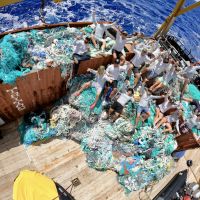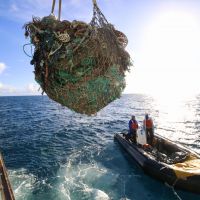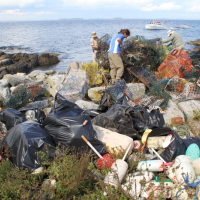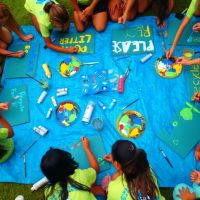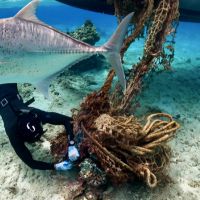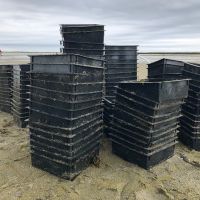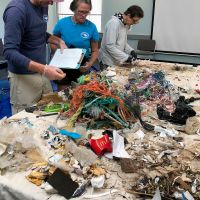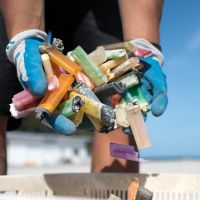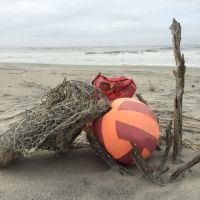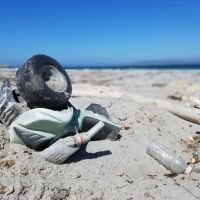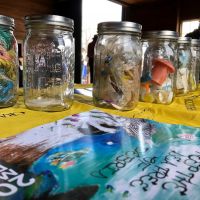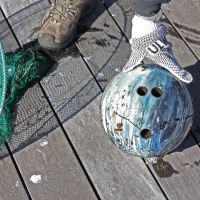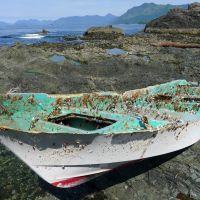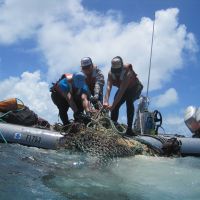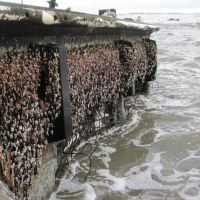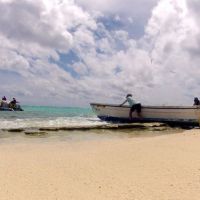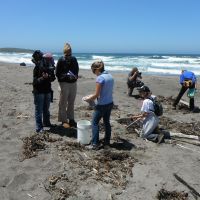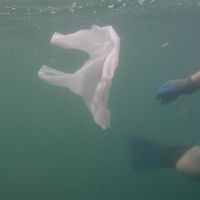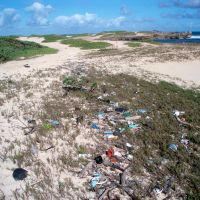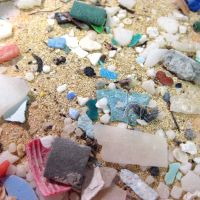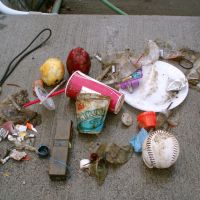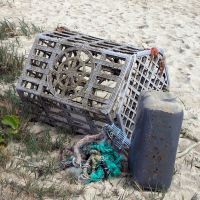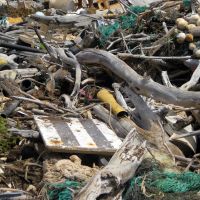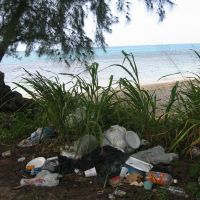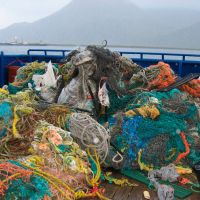The marine debris team with the nearly 124,000 pounds of debris removed from the Papahānaumokuākea Marine National Monument. Image credit: NOAA.
([field_image_credit])Marine Debris
Marine debris comes in many forms, from a cigarette butt tossed on the beach to a 4,000-pound tangle of derelict fishing nets caught on a coral reef. Take a look at some examples of the marine debris polluting U.S. coasts and learn more at www.marinedebris.noaa.gov.
Papahānaumokuākea Marine National Monument Marine Debris Removal

Kamokuokamohoali‘i marine debris removal.

A NOAA coxswain offloads 3,190 pounds of derelict fishing net from a boat at Kamokuokamohoali‘i. Image credit: NOAA.
([field_image_credit])New England Shoreline Marine Debris
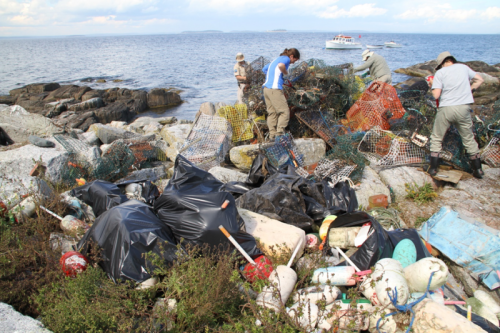
Plastic bags, fishing traps, buoys, and other debris on a New England shoreline. Image credit: National Audubon Society Seabird Restoration Program.
([field_image_credit])Students create recycling signage
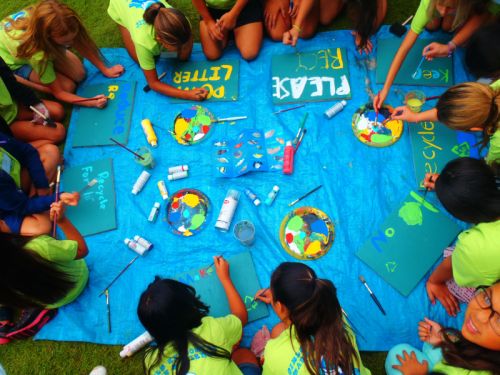
Students create recycling signage. Image credit: Hawaii Wildlife Fund.
([field_image_credit])Beach debris.
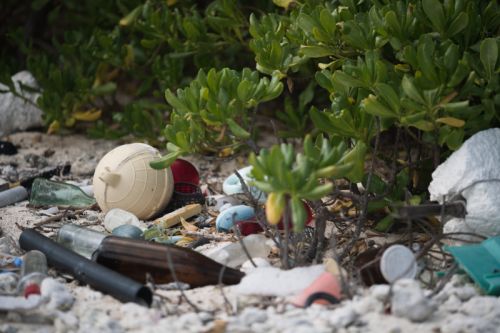
Glass bottles, plastic waste, and other debris litter a beach. Image credit: NOAA.
([field_image_credit])Hōlanikū marine debris removal

A marine debris removal team member cuts a large net from a reef at Hōlanikū. Image credit: NOAA.
([field_image_credit])Monofilament netting
On August 6, the NOAA Marine Debris joined partners at the Center for Coastal Studies and the Provincetown Harbormaster’s Office for a marine debris cleanup in the Provincetown, Massachusetts, intertidal area known as the “west end flats.” Here, a volunteer carefully removes seaweed from monofilament netting pulled from the sand.
([field_image_credit])Plastic bins
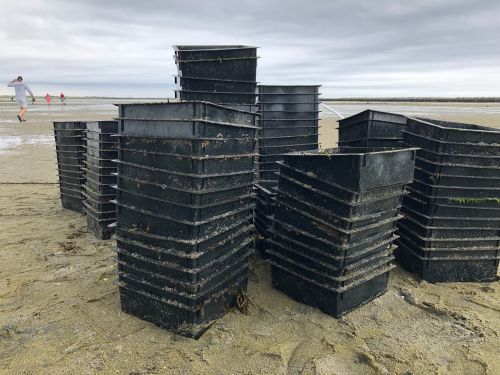
On August 6, the NOAA Marine Debris joined partners at the Center for Coastal Studies and the Provincetown Harbormaster’s Office for a marine debris cleanup in the Provincetown, Massachusetts, intertidal area known as the “west end flats.” Here, discarded plastic shellfish aquaculture bins are stacked up and ready to be recycled.
([field_image_credit])New England World Ocean Day
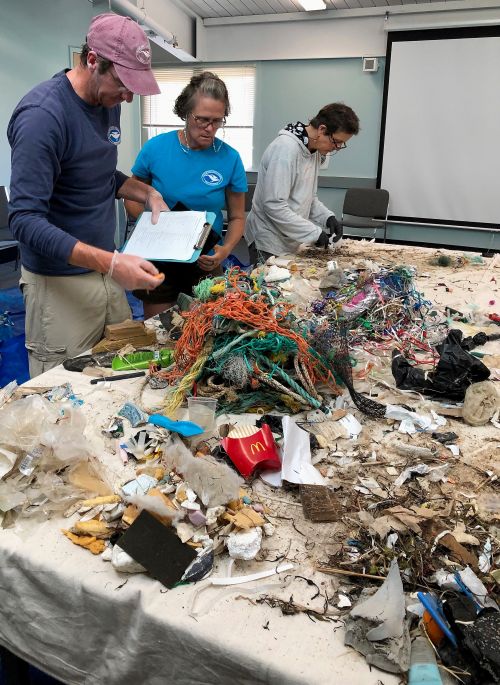
Marine debris collected at New England World Ocean Day.
([field_image_credit])Lighters

A collection of lighters found by a member of the Marine Debris team.
([field_image_credit])Southeast marine debris
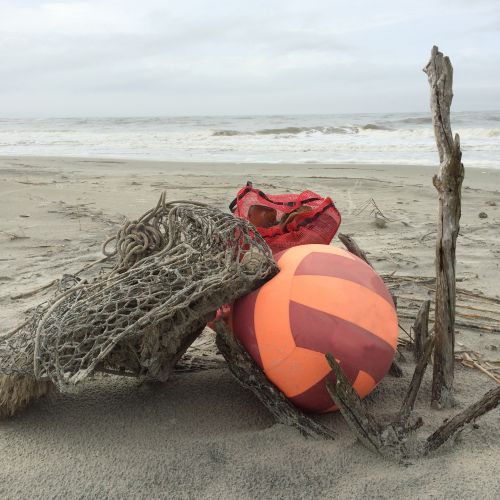
A derelict trap and forgotten toys are among the marine debris found on this beach in the Southeast U.S.
([field_image_credit])Channel Islands
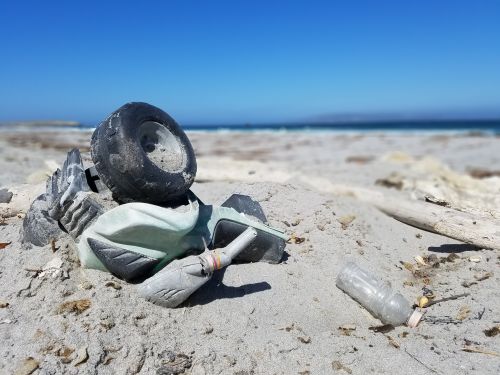
Marine debris found on the beach in California’s Channel Islands.
([field_image_credit])2019 Earth Day Event
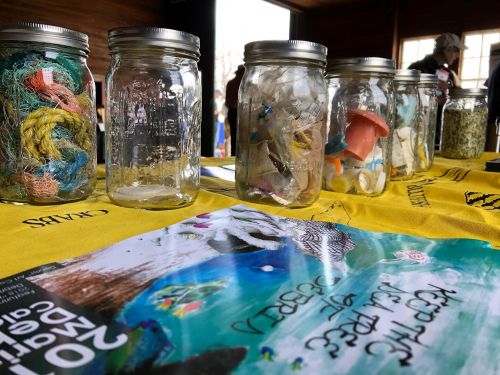
A display of marine debris items on display for Earth Day 2019.
([field_image_credit])Collecting plastic pellets
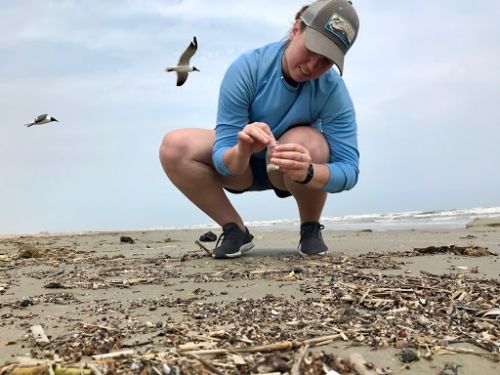
Collecting pre-production plastic pellets, otherwise known as nurdles, from a beach in Coastal Texas.
([field_image_credit])Castaway bowling ball
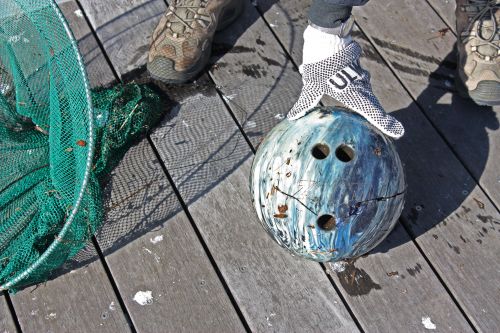
Marine debris in the Great Lakes

Small Japanese boat from 2011 tsunami found near Vancouver Island, Canada
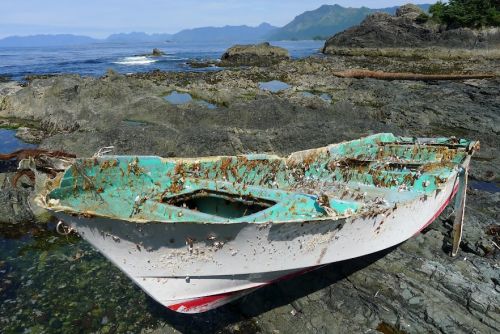
The small boat which washed up on remote Spring Island, British Columbia, Canada, was positively identified as a vessel lost during the 2011 Japan tsunami.
([field_image_credit])Hauling debris out of Hawaiian waters
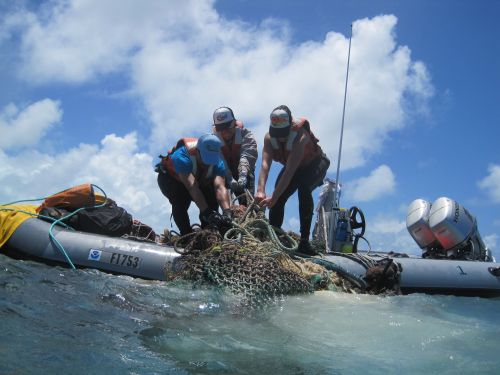
Floating dock from Japan
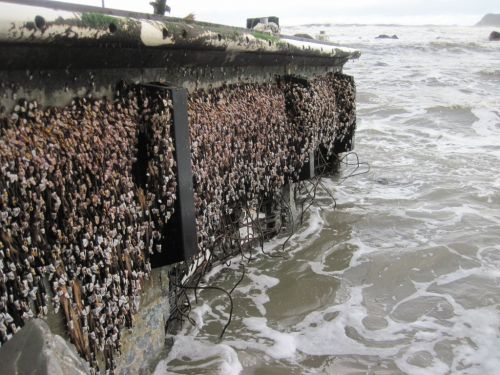
Removing marine debris from Hawaii's Midway Atoll
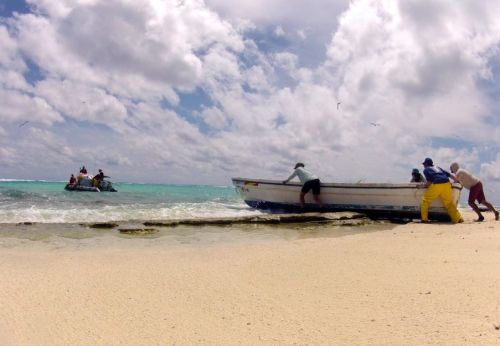
Marine debris monitoring group on the Northern California coastline
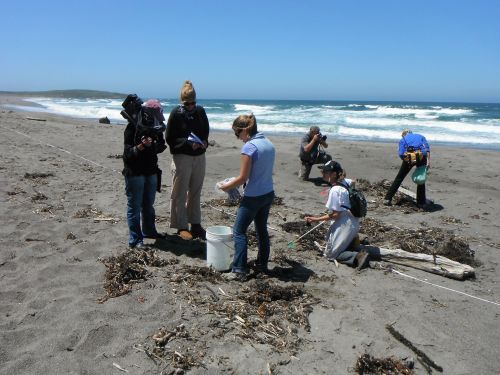
California Regional Coordinator Sherry Lippiatt shows a local news-crew some marine debris findings after conducting marine debris monitoring along the Northern California coastline with volunteers from Sonoma Surfrider.
([field_image_credit])Drifting Plastic Bags in Samoa
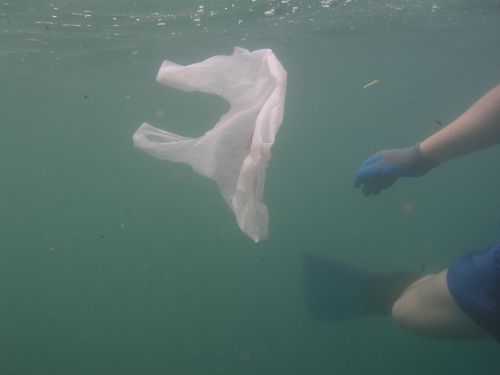
A plastic bag is found drifting underwater in Samoa in 2005. Even biodegradable plastics are generally not designed to degrade in the ocean at appreciable rates. (NOAA MDP)
([field_image_credit])Marine Debris Can Enter the Ocean Through Storm Drains and Street Runoff
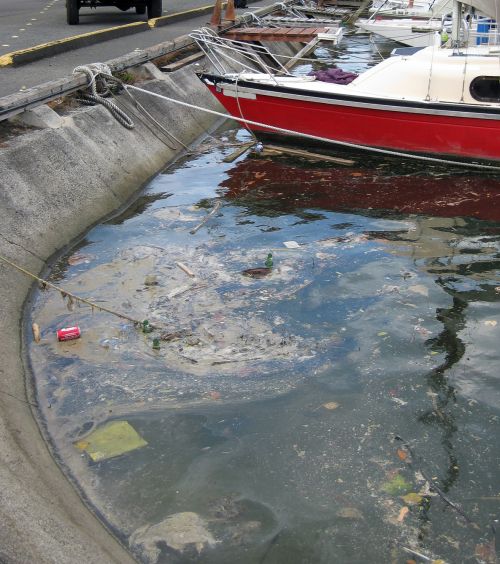
Storm water that flows along streets from rain or snow can carry street litter into storm drains and then to a nearby river, stream, canal, or even directly to the ocean. As shown by the polluted marina photographed here in 2009, this trash eventually can be washed into the ocean, where it becomes marine debris. (NOAA MDP)
([field_image_credit])Littered Beach in Hawaii

Marine debris is an eyesore along shorelines around the world, such as this Hawaii shoreline shown here in 2010. It degrades the beauty (aesthetics) of the coastal environment and in many cases may hurt the local economy if an area is a popular tourist destination. (NOAA MDP)
([field_image_credit])Common Marine Debris Found in the Great Lakes
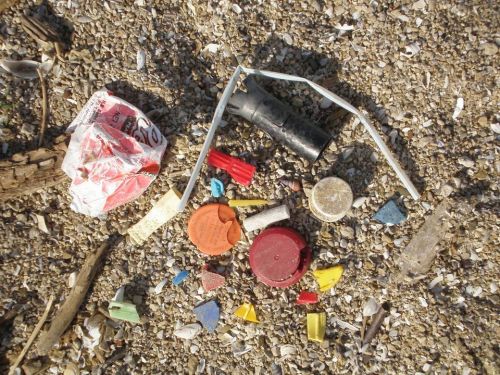
The NOAA Marine Debris Program has funded and helped support over 140 projects working with partners and addressing marine debris across the nation, including the Great Lakes. Pictured here are common debris items found in the Great Lakes. (NOAA MDP)
([field_image_credit])Microplastics
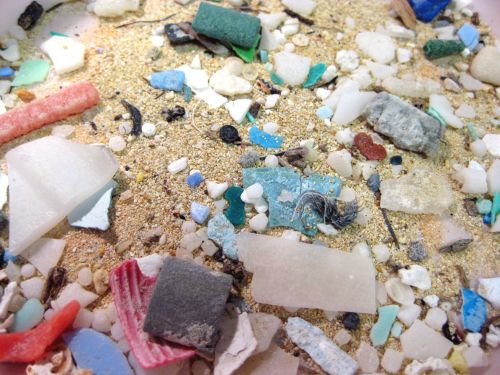
Microplastics, small plastics less than 5 millimeters long, are an increasingly common type of marine debris found in the water column and on shorelines around the world. Based on research to date, most commonly used plastics do not fully degrade in the ocean and instead break down into smaller and smaller pieces. (Photographed here in 2011.) (NOAA MDP)
([field_image_credit])Common Marine Debris Items Found on Beaches
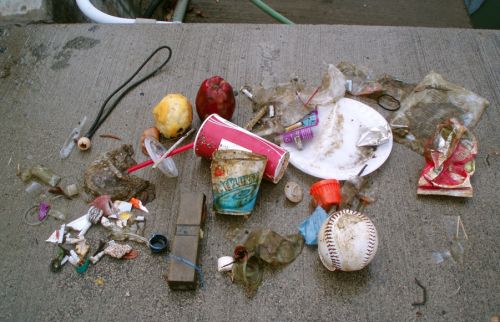
Littering, dumping, and poor waste management practices all contribute to the problem of marine debris. These marine debris items collected in Hawaii in 2007 are commonly found on beaches (except for the apple and orange). At the beach, park, or playground, you can help solve this problem by picking up any debris you see while out and by disposing of all trash in the proper receptacles. (NOAA MDP)
([field_image_credit])Derelict Fishing Gear Debris
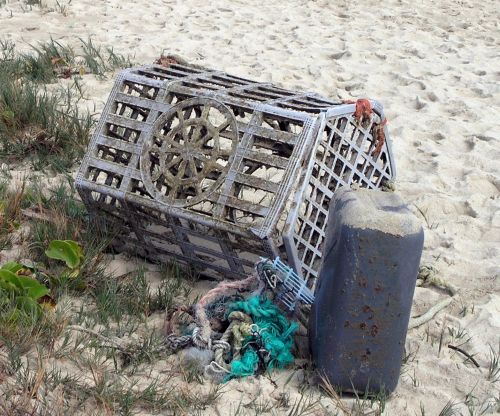
Derelict fishing gear, shown here on a beach in Hawaii, refers to nets, lines, crab and shrimp pots, and other recreational or commercial fishing equipment that has been lost, abandoned, or discarded in the marine environment. Modern gear is generally made of synthetic materials and metal, and lost gear can persist for a very long time. (NOAA MDP)
([field_image_credit])Marine Debris on Hawaii Beach
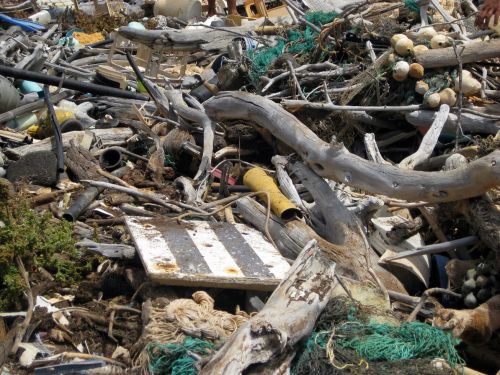
Marine debris is mixed with driftwood on a beach in Hawaii. Marine debris of all types accumulates in and around the Hawaiian Islands due to oceanic currents and winds in the North Pacific. (NOAA MDP)
([field_image_credit])Beach Litter in Puerto Rico
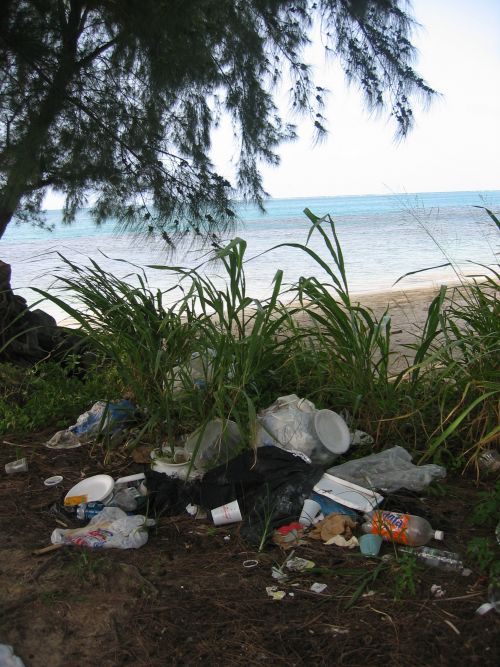
Litter, such as that found on this Puerto Rican beach in 2006, can become marine debris if not properly disposed of before being carried by wind, waves, people, or animals into the ocean nearby. (NOAA MDP)
([field_image_credit])Derelict Fishing Nets
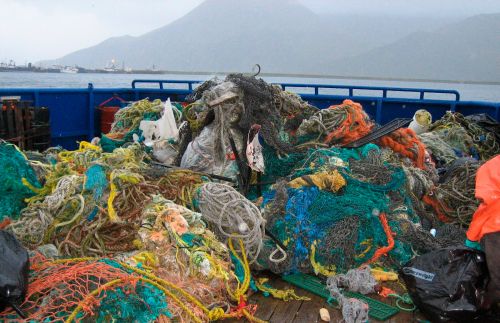
Large conglomerations of derelict fishing nets, sometimes weighing thousands of pounds, are removed from U.S. reefs and shores each year. A partnership in Hawaii devised a unique program to recycle these abandoned nets into usable electricity. The derelict fishing nets pictured here were collected in Alaska during cleanup efforts in 2011. (NOAA MDP)
([field_image_credit]) An official website of the United States government.
An official website of the United States government. 
